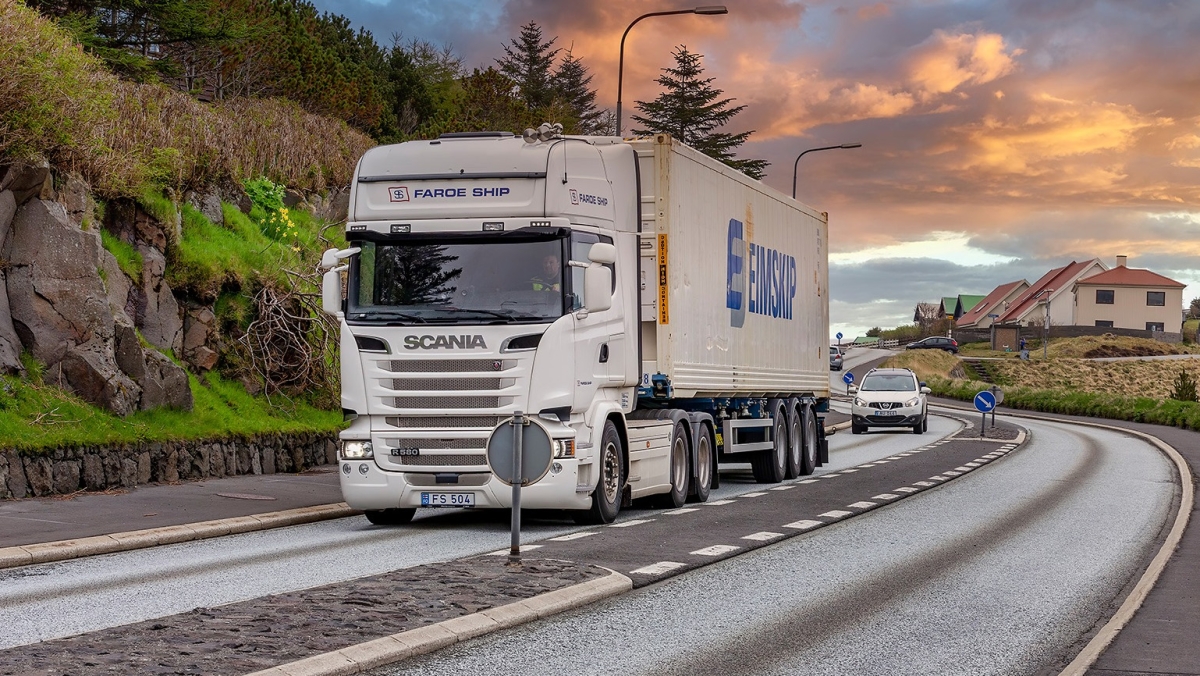GDP and main figures
03. Oct 2023
Economic growth still strong in 2022

The Gross Domestic Product (GDP) is a measure of the size and health of a country’s economy over a given period. When the GPD is measured in fixed prices, it is possible to measure whether the volume of produced goods and services is growing or shrinking independent of price trends. Annual GDP changes in fixed prices are a measure of real economic growth.
Progress in the Faroese economy
GDP in fixed prices increased 5.4 percent in 2022. This growth suggests that the Faroese economy has recovered from the downturn caused by the Covid-19 pandemic. The real economic growth ranged between 5% and 6% in 2021 and 2022. This is a relatively high growth rate, compared an annual GDP growth of 3.4% over the past decade.
[px-graph-1]
Higher growth than in other Nordics
It is possible to compare real GDP growth in the Faroes to real GDP growth in other countries. The real GDP growth of 5.4% in 2022 was higher than in the other Nordic countries, except for Iceland, which experienced a 7.2% growth.
[px-graph-3]
The Faroes had an average real GDP growth of just over 3% in the 2020-2022 period, compared to 2.3% in Denmark and just below 2% in Norway and Sweden in the same period. Iceland’s economy has seen more volatility, with an average real GDP growth of 1.5% from 2020 to 2022.
What drove economic growth in 2022?
The graph below shows the gross value added (GVA) in each industrial branch from 2010 to 2022 and the contribution of each industrial branch to the overall annual GVA growth.
[px-graph-3]
Most service industries did well in 2022, with a total contribution to growth of 1.9%. This represents about half of the total growth in GVA in 2022. Pelagic fish catches increased in 2022, while aquaculture production declined slightly. The primary sector is the most usually volatile industry. The secondary sector had a contribution to growth of 0.3% in 2022.
GDP in current prices exceeds DKK 25 billion
2022 was characterised by high inflation, especially in grocery prices and fuel. This is reflected in a GDP growth in current prices of 9.5%, or almost DKK 2.2 billion. This resulted in a GDP in current prices of almost DKK 25.2 billion in 2022, equivalent to DKK 467,000 per capita.
[px-graph-2]
About the national accounts
The national accounts are a general description of the national economy and an analytical description of relations between societal sectors and Faroese transactions with the rest of the world. The GDP, a measure of the size and health of the economy over a given period, is one of the key indicators of the national accounts.
About the national accounts measured in fixed and current prices
In some contexts, it may be more important to measure volume changes in the national accounts than trend in current prices.
GDP and GVA in fixed prices and real economic growth
GDP and GVA can be calculated in fixed prices (chained values) to measure volume changes. Price changes are not taken into account using this method and therefore it is an inflation-adjusted measure. The GDP trend in fixed prices (chained values) is used as a measurement of the economic real growth.
Fixed prices (chained values) are a macroeconomic assessment of the volume of goods and services, where the weighting basis changes and is based on prices from the previous year. The previous year is chain-linked to the base year, but the reference year remains unchanged.
GDP in current prices
Nominal GDP is a macroeconomic assessment of the value of goods and services using current prices in its measure.
The contribution to the gross value added (GVA) shows the contribution from each industrial branch to the total GVA.
Minor changes to the national accounts
Minor revisions have been made to this year’s national accounts report for the 2019-2021 period in order to obtain more accurate figures. The effect of these revisions varies from one year to another, but the overall picture is unaffected.